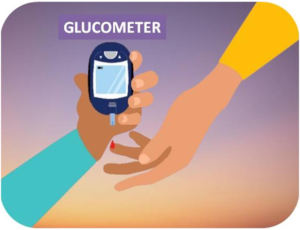
Introduction
The rapid advancement of technology has left a profound impact on many sectors, and healthcare is no exception. Among the most transformative developments in recent years is Digital Health, encompassing telemedicine, health informatics, wearable devices, and AI-driven diagnostic tools. This digitization aims to make healthcare more efficient, personalized, and accessible. Telepharmacy, a subset of digital health, stands as a prime example of how modern technology can extend pharmaceutical services to remote and underserved populations. This blog delves deep into the world of digital health and telepharmacy, analyzing their evolution, impact, benefits, challenges, and future outlook.
The Evolution of Digital Health
The Beginning of Healthcare Digitization
Healthcare has long relied on human resources for diagnosis, treatment, and care management. The introduction of electronic health records (EHRs) and digital management systems in the early 2000s laid the foundation for digital health. Digitization began with improving documentation accuracy, minimizing errors, and providing healthcare professionals with easier access to patient data.
The Role of Mobile Health (mHealth)
Mobile health, or mHealth, emerged as smartphones became more ubiquitous. Applications designed to monitor health, track fitness, or facilitate virtual consultations became popular tools, empowering individuals to manage their health independently. This movement paved the way for telehealth, which involves delivering healthcare services via telecommunications technology.
The Convergence of AI and Healthcare
Artificial intelligence (AI) started revolutionizing healthcare through predictive analytics, clinical decision support, and medical imaging interpretation. From diagnosing conditions to predicting patient outcomes, AI-driven algorithms began to complement human expertise, pushing healthcare into a new era of accuracy, speed, and personalization.
Understanding Telepharmacy
What is Telepharmacy?
Telepharmacy refers to the delivery of pharmaceutical services using telecommunications technology. It allows pharmacists to interact with patients remotely, offering consultations, reviewing prescriptions, dispensing medications, and providing medical advice. Telepharmacy is particularly beneficial for individuals in remote areas, where access to healthcare and pharmacies is limited.
The Development of Telepharmacy
The concept of telepharmacy gained momentum with the expansion of telehealth services. While the traditional pharmacist-patient interaction took place in person, telepharmacy leveraged technology to maintain this vital communication in a virtual environment. The COVID-19 pandemic acted as a significant catalyst for telepharmacy, with patients relying on remote services to avoid exposure to the virus.
Types of Telepharmacy Services
- Remote Patient Counseling: Pharmacists use video or audio communication platforms to counsel patients about their medications, side effects, and proper usage.
- Prescription Verification: Telepharmacy allows remote verification of prescriptions, ensuring that pharmacists can review and approve prescriptions without being physically present.
- Medication Dispensing: Automated medication dispensing systems can be managed by a remote pharmacist who oversees the process through digital interfaces.
- Chronic Disease Management: Telepharmacy supports chronic disease management by facilitating remote monitoring and follow-ups for patients with conditions such as diabetes, hypertension, or asthma.
The Benefits of Digital Health and Telepharmacy
Increased Accessibility
One of the most significant benefits of digital health and telepharmacy is increased accessibility. By removing geographical barriers, individuals in rural and underserved communities can access healthcare services that were previously unavailable to them. Telepharmacy can provide lifesaving medications and pharmaceutical advice in regions without a physical pharmacy.
Convenience and Patient-Centric Care
Telepharmacy and digital health solutions bring convenience by eliminating the need for physical visits. Patients can receive consultations from the comfort of their homes, reducing wait times and travel expenses. This shift encourages patient-centric care, where the focus is on enhancing the patient’s experience and well-being.
Cost-Effectiveness
Digital health technologies and telepharmacy can reduce healthcare costs by minimizing hospital admissions, optimizing medication adherence, and streamlining workflow processes. For patients, telepharmacy eliminates the expenses related to transportation and in-person consultations.
Better Medication Management
Telepharmacy enables more precise and personalized medication management, ensuring that patients understand how to take their medications properly. Remote monitoring tools allow pharmacists to track adherence, adjust doses, and make recommendations that reduce the likelihood of medication errors.
Continuity of Care
Digital health fosters continuity of care by maintaining comprehensive records of a patient’s medical history. Telepharmacy services help pharmacists provide follow-up consultations, ensure that prescriptions are refilled in a timely manner, and monitor long-term patient health outcomes.
Challenges and Concerns in Digital Health and Telepharmacy
Privacy and Security Concerns
Handling sensitive health data digitally comes with the challenge of maintaining privacy and security. The risk of cyberattacks, data breaches, or unauthorized access to patient information is a pressing concern in the digital health space. Protecting patient confidentiality requires strict data encryption, secure communication platforms, and compliance with regulations such as HIPAA.
Regulatory Hurdles
Telepharmacy and digital health services operate in a complex regulatory environment. Each country or region has its own set of rules governing telemedicine, and navigating these regulations can be difficult for healthcare providers. In telepharmacy, specific regulations concerning the remote dispensing of medications and interstate practice must be addressed.
Digital Divide and Accessibility
While digital health promises greater accessibility, it may also widen the gap between tech-savvy individuals and those who lack access to the necessary technology or are unfamiliar with digital tools. Telepharmacy services, for example, require stable internet connections and basic technical literacy, which can be barriers for certain populations.
Ethical Considerations
The rise of AI-driven healthcare solutions raises ethical questions about the role of machines in patient care. Ensuring that AI systems are transparent, accountable, and free from bias is crucial to maintaining trust in digital health solutions. Telepharmacy must also balance the convenience of remote services with the need for in-person care in certain cases, especially for patients with complex medical needs.
The Future of Digital Health and Telepharmacy
Integration of AI in Telepharmacy
Artificial intelligence is set to play an even more significant role in telepharmacy by improving medication dispensing accuracy, predicting patient needs, and optimizing pharmaceutical workflows. AI algorithms can identify potential drug interactions, flag adherence issues, and even personalize medication regimens based on a patient’s genetic profile.
Virtual Reality (VR) and Augmented Reality (AR) in Healthcare
The use of VR and AR in digital health offers exciting possibilities, from virtual consultations to immersive training for healthcare professionals. Telepharmacy could benefit from AR technology that allows pharmacists to visualize drug formulations, educate patients through interactive interfaces, and improve the overall patient experience.
Blockchain for Secure Health Data
Blockchain technology is increasingly viewed as a solution for securing health data, ensuring transparency, and protecting patient privacy in digital health platforms. For telepharmacy, blockchain can streamline prescription verification, reduce fraud, and create tamper-proof patient records.
Telepharmacy and Chronic Disease Management
As chronic diseases become more prevalent globally, telepharmacy will play a critical role in disease management. Remote monitoring, AI-driven predictive tools, and continuous patient engagement through telepharmacy will enhance disease prevention, improve health outcomes, and reduce healthcare costs for chronic conditions.
Expansion of Telepharmacy in Developing Countries
The adoption of telepharmacy in developing countries has the potential to address medication shortages, improve healthcare access, and bridge the gap between urban and rural healthcare services. As internet connectivity improves globally, telepharmacy could provide critical pharmaceutical services in low-resource settings.
Real-World Case Studies
Case Study 1: Telepharmacy in Rural Communities
A telepharmacy program implemented in rural India provided essential medications and counseling to remote areas where no pharmacies existed. Through a network of telecommunication hubs, local healthcare workers and remote pharmacists collaborated to ensure that patients received accurate prescriptions and timely care.
Case Study 2: Digital Health in Urban Hospitals
A hospital in New York City implemented a digital health platform that included telemedicine consultations, remote patient monitoring, and AI-assisted diagnostics. The integration of telepharmacy services allowed pharmacists to approve prescriptions remotely, reducing wait times for patients and optimizing hospital workflows.
Conclusion
Digital health and telepharmacy are at the forefront of healthcare innovation, providing solutions to the growing demand for accessible, efficient, and personalized care. The ability to offer healthcare services remotely opens new doors for patient care, reduces geographical barriers, and ensures better health outcomes. As these technologies continue to evolve, they hold the potential to revolutionize healthcare globally. However, addressing the challenges of privacy, regulatory compliance, and the digital divide will be essential in ensuring that digital health and telepharmacy benefit everyone.







1 thought on “Digital Health and Telepharmacy: Revolutionizing Healthcare for the Future”
Thanks for breaking down the benefits of mindfulness! I’m eager to start my meditation practice now.